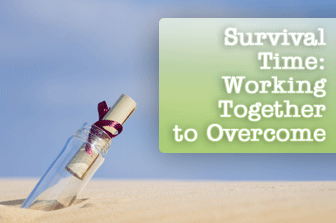For years, 'Survivor' has been one of the most popular programs on television.
It redefined, and some might say created, reality television giving us a perfect blend of action and drama. You can bring some of that same dramatic feel into your ESL classroom without sacrificing the time and energy you put into language teaching and learning. The following Survivor-style activities will require your students to communicate with one another in situations which have positive or negative effects that directly affect them. The next time you are looking to liven up your ESL class, try one of these activities and see just who survives!

Survivor-style Activities for Your ESL Classroom
-
1
On the Up and Up
One of the popular types of challenges on Survivor and other reality programs is building a tower out of certain types of materials. You can use this same type of challenge to get your students communicating with one another as they come up with a strategy to build their own tower. Divide your class into groups of three or four to plan for the challenge. In this activity, your students will use simple plastic cups to build a six-foot tower. Give each group a package of plastic cups to work with. You will also need to mark a spot on the wall at the six foot mark (you can use a piece of masking tape) so you will know when the first group has reached the target height. Give each group five to ten minutes to plan their strategy for stacking the cups. They will have to plan how to build a sturdy structure and stay within the number of cups they have. They will also have to build quickly and may want to discuss who do what once the challenge begins. Once the groups have planned their strategies, sound the start of the race and see which group can reach six feet first. After the activity, have each group evaluate their strategy. What worked? What did not work? What would they change if they were to do it again? If you like, have each group work together to write their evaluation after they discuss the results.
-
2
Cross that Bridge When You Come to It
If you are teaching English as a second language in the content classroom, this activity may be just what you need to fulfill your science requirement. Start by brainstorming a list of all the bridges your students can think of. They can be located anywhere around the world. Depending on where you live and where your students come from, your list may not be very long, but you can expand it considerably by going to famousbridge.com. This site lists famous bridges around the world and includes facts and pictures about many of the bridges. Your students should work in groups of about three students each as they look at these famous bridges and how they are constructed. Once the groups have had time to do some research, present the challenge. Each group will have to build a bridge across two desks which should be placed exactly two feet apart. In addition, the class will have to come up with a method of testing the strength of each bridge. Give your students at least a few days to make their plans and build their bridges. They will need to communicate with one another the strengths and weaknesses of the different bridge styles they could use and then choose the best one and construct it. On the day that the bridges are due, give your students some time to set up their bridges. Then test the strength of each one according to the method your class decided upon earlier in the week. Be sure to take pictures throughout the activity and then display the winning bridge on a bulletin board in your classroom.
-
3
Attempting the Theoretical
You can take the challenges to an even higher level by asking your students to develop a plan to scale a local building. This building might be the school building or a skyscraper in your city or any other building that might work for your class. In this activity, groups of students will make detailed plans for a strategy to scale the building, though they will not actually put their plan into action. Working in groups of three or four, have your students come up with a written plan for how to scale the building. They should include the materials that the climber would need as well as any other resources (human, safety, etc.) that should be included. Then each group should build a model or create a detailed diagram explaining their strategy and equipment. If you like, you may want to have an expert rock climber or someone who trains in parkour visit your class and determine which group has the best plans. While your guest is visiting, ask him or her to share a little about their sport and, if possible, give a demonstration.
Working together to accomplish a difficult task is one of the best ways for your students to use their English speaking skills in a real life and practical situation.
These reality program style challenges will do just that, challenge your students’ speaking as well as problem solving skills. The bonus is they will be able to see the effectiveness of their communication in this real setting. Try one in your class and see just how good your students are at surviving these challenging activities!
P.S. If you enjoyed this article, please help spread it by clicking one of those sharing buttons below. And if you are interested in more, you should follow our Facebook page where we share more about creative, non-boring ways to teach English.







